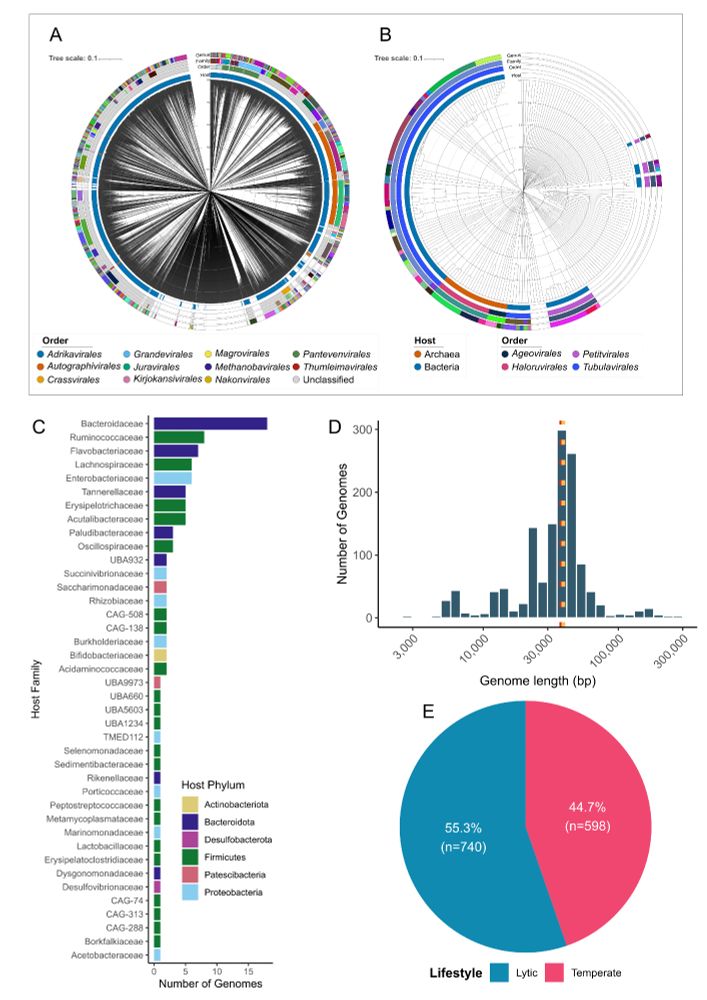







🐄 Calves: more simple communities, similar to human gut viruses, and lots of prophages
🐂 Adults: High diversity, high novelty, and uniquely "ruminant" 9/13

🐄 Calves: more simple communities, similar to human gut viruses, and lots of prophages
🐂 Adults: High diversity, high novelty, and uniquely "ruminant" 9/13
Absent in calves, but present in >50% of adults
These viruses emerge as the cow's GI tract develops from monogastric (similar to humans) to a functional adult rumen 8/13

Absent in calves, but present in >50% of adults
These viruses emerge as the cow's GI tract develops from monogastric (similar to humans) to a functional adult rumen 8/13
- Highest viral diversity
- Lowest bacterial diversity
- Highest virus-to-host ratios
- Most viral genes under evolutionary pressure
- Peak viral loads
This transition period = a huge ecological reorganisation in the dairy cow microbiome 7/13

- Highest viral diversity
- Lowest bacterial diversity
- Highest virus-to-host ratios
- Most viral genes under evolutionary pressure
- Peak viral loads
This transition period = a huge ecological reorganisation in the dairy cow microbiome 7/13
🐄 Calves: Low diversity, dominated by temperate phages, similar to human gut viruses
🐂 Adults: High diversity, mostly lytic phages, uniquely "ruminant"
And all three adult groups we profiled had distinct viral communities 5/13

🐄 Calves: Low diversity, dominated by temperate phages, similar to human gut viruses
🐂 Adults: High diversity, mostly lytic phages, uniquely "ruminant"
And all three adult groups we profiled had distinct viral communities 5/13

We recovered over 30,000 vOTUs (approximate to species), and included shallow bulk metagenomes for each sample to place the viruses within the context of their microbial hosts 3/13

We recovered over 30,000 vOTUs (approximate to species), and included shallow bulk metagenomes for each sample to place the viruses within the context of their microbial hosts 3/13






